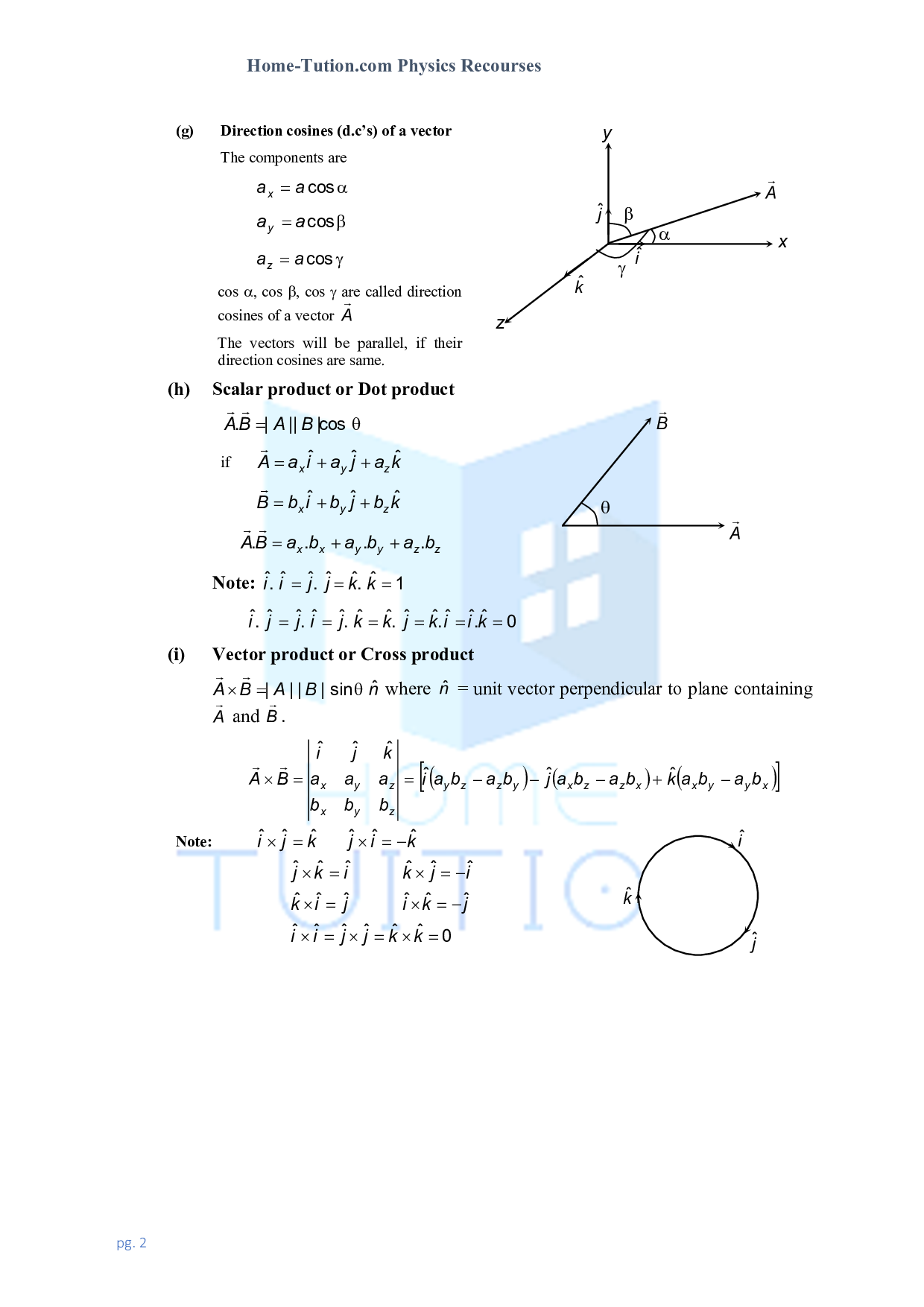vector formulas physics
About vector formulas physics
Here are some of the commonly used vector formulas in physics:
-
The magnitude of a vector: The magnitude (or length) of a vector is given by:
|a| = √(a?² + a?² + a?²)
where a?, a?, and a? are the components of the vector in the x, y, and z directions, respectively.
-
Unit vector: A unit vector is a vector with a magnitude of 1. To find the unit vector in the direction of a vector a, we divide a by its magnitude:
? = a / |a|
where ? is the unit vector in the direction of a.
-
Dot product: The dot product (or scalar product) of two vectors a and b is given by:
a · b = |a| |b| cos(θ)
where θ is the angle between the two vectors. This formula is often used to find the angle between two vectors.
-
Cross product: The cross product (or vector product) of two vectors a and b is given by:
a x b = |a| |b| sin(θ) n
where n is a unit vector perpendicular to both a and b, and θ is the angle between the two vectors. This formula is often used to find the direction of a vector perpendicular to two other vectors.
-
Component form: A vector a can be written in component form as:
a = a?i + a?j + a?k
where i, j, and k are unit vectors in the x, y, and z directions, respectively.
-
Projection: The projection of a vector a onto a vector b is given by:
proj_b a = (a · b / |b|²) b
where · represents the dot product.
-
Scalar projection: The scalar projection of a vector an onto a vector b is given by:
|proj_b a| = |a| cos(θ)
where θ is the angle between the two vectors.
These are just a few of the many vector formulas used in physics. Understanding these formulas and how to use them is essential for solving problems in mechanics, electromagnetism, and other areas of physics.
Find the pdf of List of vector formulas of physics


Frequently Asked Questions on vector formulas physics
Vector formulas in physics are mathematical equations used to describe the properties of vectors, which are quantities that have both magnitude and direction. These formulas are used to calculate the magnitude, direction, and components of vectors, as well as to perform operations such as addition, subtraction, dot product, and cross product.
The dot product of two vectors is a scalar quantity equal to the product of their magnitudes and the cosine of the angle between them. It is denoted by the symbol "·" or "⋅", and is used to calculate the angle between two vectors.
The cross product of two vectors is a vector quantity that is perpendicular to both of the original vectors. It is denoted by the symbol "×", and its magnitude is equal to the product of the magnitudes of the two vectors and the sine of the angle between them. The direction of the cross-product is given by the right-hand rule.
The component form of a vector is a way of writing a vector as the sum of its components in each dimension. For example, a vector in two dimensions can be written as (x, y), where x is the component in the x direction and y is the component in the y direction. A unit vector is a vector with a magnitude of one. It is often used to describe the direction of a vector and is calculated by dividing the vector by its magnitude.
The projection of a vector onto another vector is a vector that lies along the direction of the second vector. It is calculated by taking the dot product of the two vectors and dividing by the magnitude of the second vector.
The scalar projection of a vector onto another vector is the magnitude of the projection vector. It is calculated by taking the dot product of the two vectors and dividing by the magnitude of the second vector, and represents the length of the projection of the first vector onto the second vector.
Vector formulas are used in physics to describe the properties of physical systems that involve vectors, such as force, velocity, and acceleration. They are used to calculate the magnitude and direction of vectors, as well as to perform operations such as addition, subtraction, dot product, and cross product. Understanding these formulas is essential for solving problems in mechanics, electromagnetism, and other areas of physics.